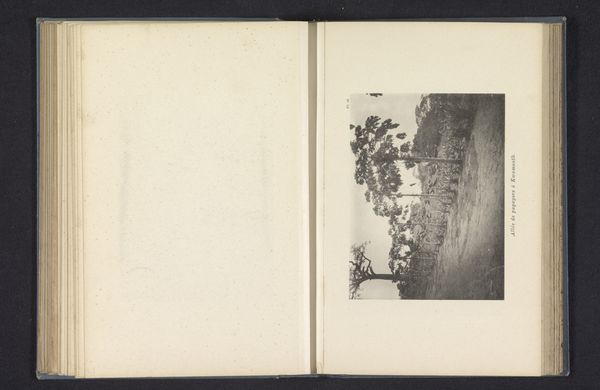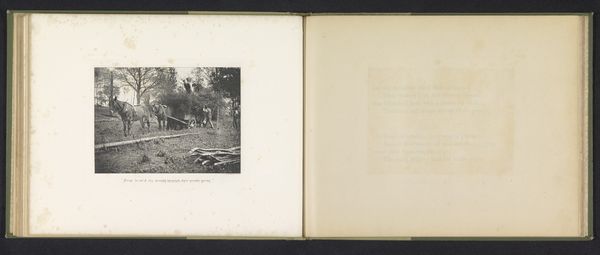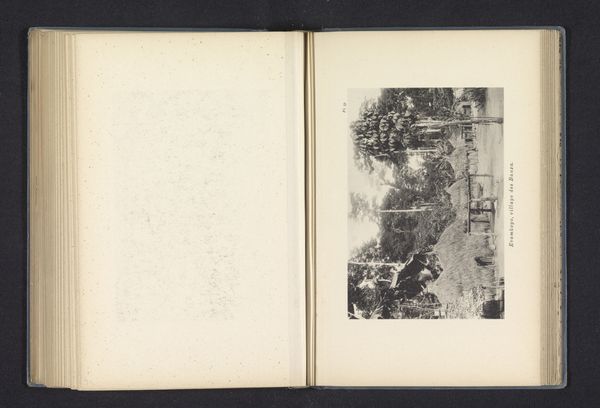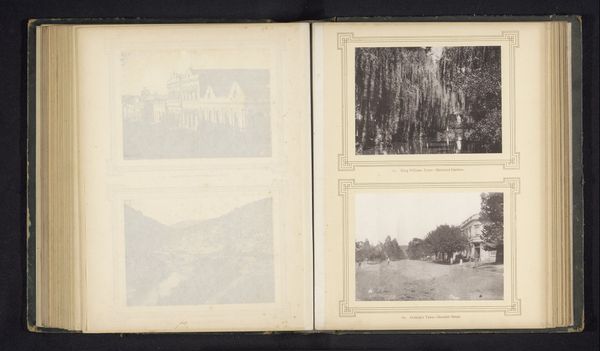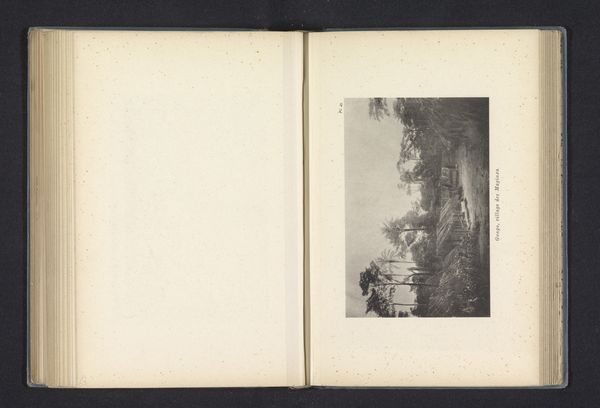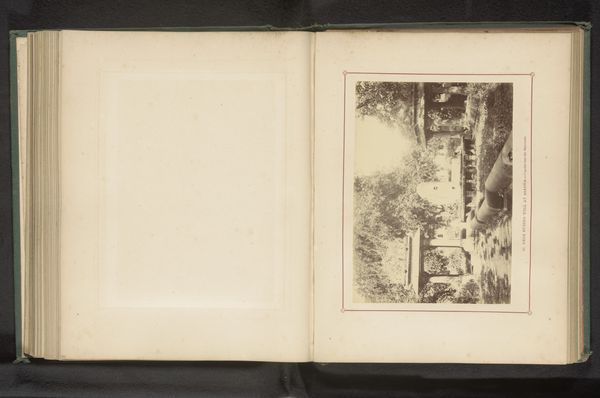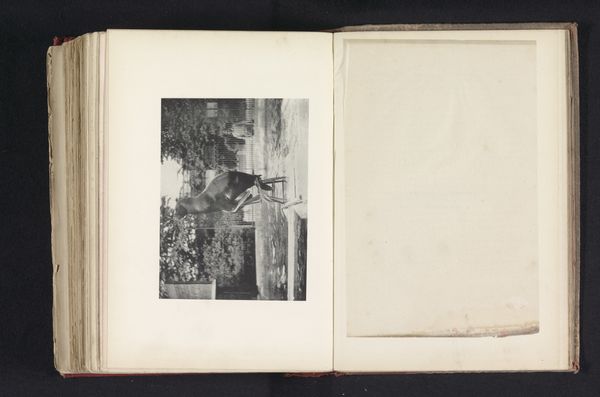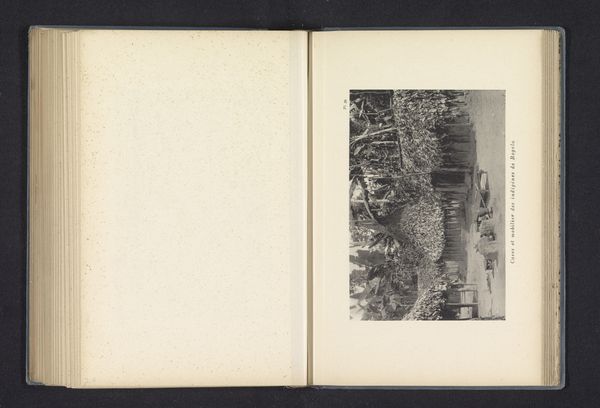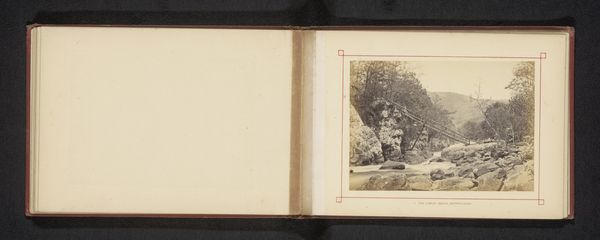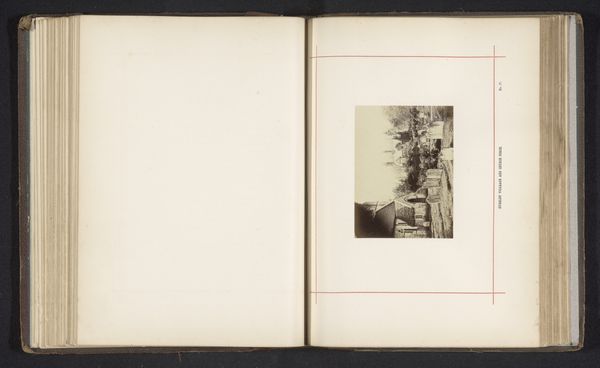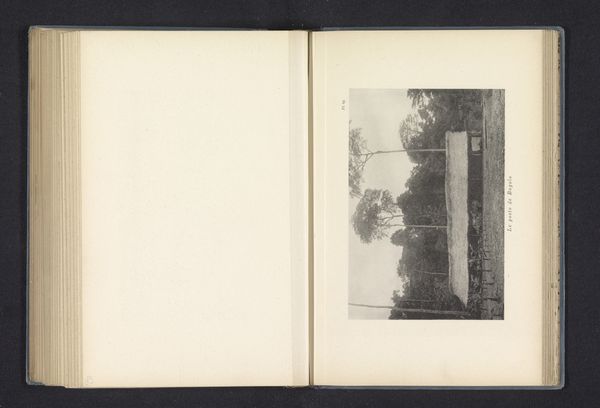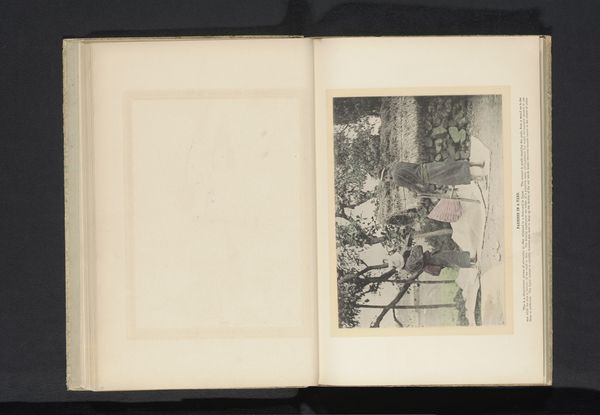![['Mozambique', 'Witch doctress'] by Sam Alexander](/_next/image?url=https%3A%2F%2Fd2w8kbdekdi1gv.cloudfront.net%2FeyJidWNrZXQiOiAiYXJ0ZXJhLWltYWdlcy1idWNrZXQiLCAia2V5IjogImFydHdvcmtzLzNlMWE1OWMzLTRhZDYtNDc5ZS1iMmNhLTY4YjE5YTNmNzJlNi8zZTFhNTljMy00YWQ2LTQ3OWUtYjJjYS02OGIxOWEzZjcyZTZfZnVsbC5qcGciLCAiZWRpdHMiOiB7InJlc2l6ZSI6IHsid2lkdGgiOiAxOTIwLCAiaGVpZ2h0IjogMTkyMCwgImZpdCI6ICJpbnNpZGUifX19&w=3840&q=75)
albumen-print, photography, albumen-print
#
albumen-print
#
portrait
#
african-art
#
photography
#
albumen-print
Dimensions: height 290 mm, width 219 mm
Copyright: Rijks Museum: Open Domain
Curator: Here we have two photographs dating from before 1880. The first, titled “Mozambique,” depicts a street scene. Beneath it we see “Witch Doctress,” a portrait of a woman. Both are albumen prints, a popular photographic process at the time. Editor: What immediately strikes me is the texture. In the street scene, you can feel the roughness of the stone wall and the gritty road underfoot, whereas, in the portrait, the doctress appears adorned with organic, perhaps even crude materials. It’s a strong contrast. Curator: Yes, the formal elements definitely accentuate that distinction. Look at the composition of “Mozambique” - the converging lines lead the eye towards a distant focal point, establishing depth. The second photograph uses framing instead: the trunk of the tree serves to place and compress the subject. Editor: And it's vital to consider what's absent in their making, namely, who produced these photographs, how their position in that production impacted what they chose to depict, and to what extent they engaged with the communities shown. The woman's accoutrements appear more deliberately composed than happenstance... Were they staged? Curator: It’s a valid question to consider their intentions. It’s possible they were interested in capturing cultural archetypes. If that is so, do the forms chosen support or conflict with this objective? Observe, for example, how the patterns in the doctress’ clothing compete for dominance. It seems an attempt at genuine rendering over contrived symbolism. Editor: Or perhaps a romanticized rendering through a colonial gaze, nonetheless, but if so the very act of capturing these photographs became an extension of power, using developing scientific methods to render other communities. It leads to considerations about photographic ethics and representation even in its infancy. Curator: It’s a complex interplay. By recognizing this through the image, however, we may reframe it into discourse. A vital task in evaluating art across time. Editor: I agree. Paying attention to those visual cues offers insights beyond initial aesthetic value, unveiling power dynamics woven into its creation.
Comments
No comments
Be the first to comment and join the conversation on the ultimate creative platform.
